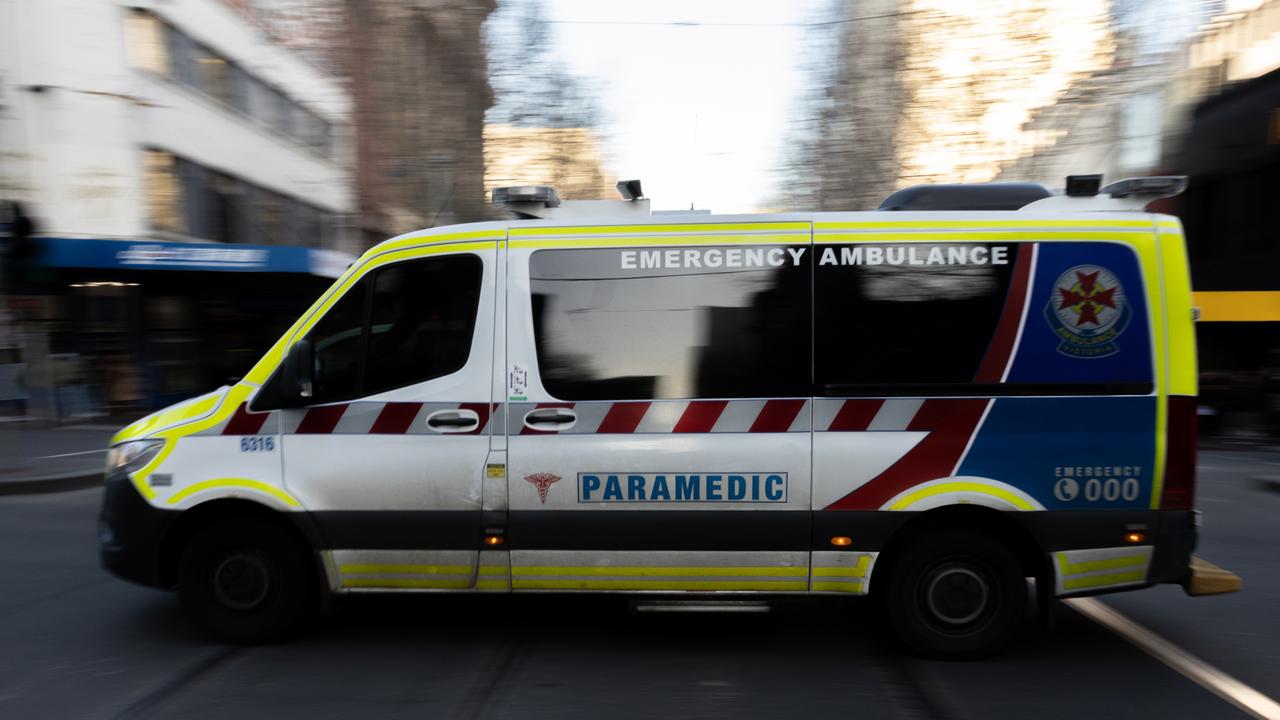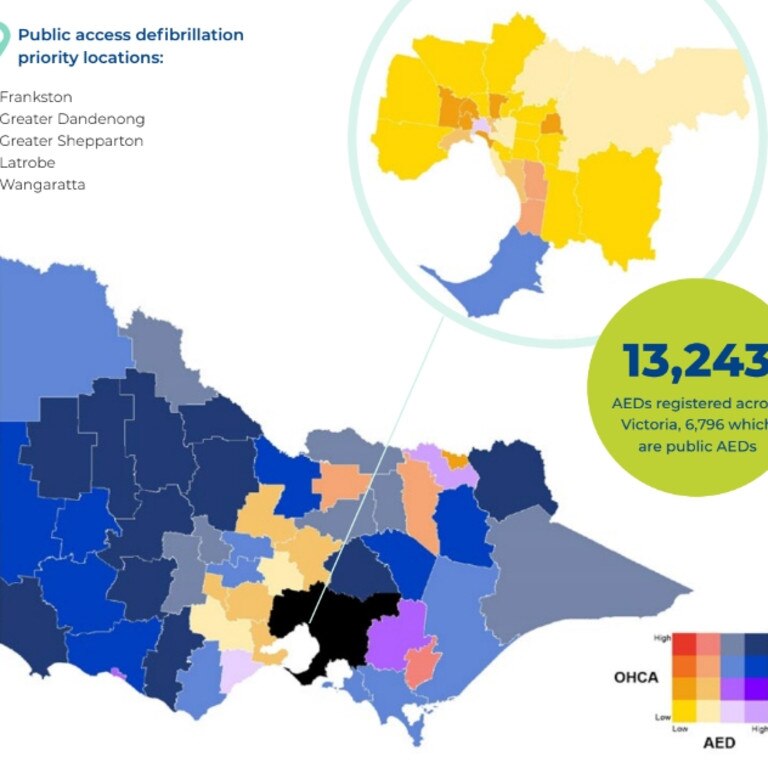One in five people suffering cardiac arrest did not receive CPR before paramedics arrived
Paramedics are responding to more cardiac arrests than ever, as new data reveals how likely your town is to give bystander CPR.

Victorian regions with the lowest bystander CPR rates have been revealed as cardiac arrests reach a record high, with ambulance call-outs increasing for the fourth year in a row.
About 20 Victorians suffered a cardiac arrest – with just two surviving – every day last financial year, but their shot at life more than doubled if they received CPR from a bystander.
Paramedics responded to 7830 cardiac arrests in the community in 2022-23, a jump of more than 6 per cent.
The latest Victorian Ambulance Cardiac Arrest Registry shows this number increased even when adjusted for an increasing and ageing population.
Researchers believe the rise could be due to delayed deaths as vulnerable populations’ cardiac arrest rates dropped when they were protected in lockdowns.
Ambulance Victoria research and evaluation director Ziad Nehme said Victoria’s cardiac survival rates were the highest in Australia “and among the best in the world”, with a median paramedic response time of 8.3 minutes.

But the public could help them save even more lives as 80 per cent of patients given CPR by paramedics in 2022-23 were first treated by bystanders, boosting their survival rate from 5 to 12 per cent.
The figure – which does not include patients who were alone and has plateaued over the past decade – means one in five patients effectively have their shot at life halved.
Buloke, Central Goldfields, East Gippsland, Hindmarsh, Latrobe, Northern Grampians, Pyrenees, Strathbogie, Towong and Yarriambiack had the lowest bystander CPR and highest cardiac arrest rates.
Defibrillator data was even more drastic, with a record 139 Victorians treated by a public AED, saving more than half of patients with a shockable rhythm. About one in four who had to wait for paramedics for a shock survived.
Frankston, Greater Dandenong, Greater Shepparton, Latrobe and Wangaratta had the lowest number of public AEDs.
Men made up 65 per cent of adult cardiac arrest patients and the median age was 70, while there were 90 cases of children under 16-years-old.

A cardiac problem – such as a heart attack – was the most common cause, though traumatic injuries, overdoses and drownings triggered some arrests.
While survival rates were still slightly below pre-Covid levels, Ambulance Victoria is aiming to boost the state’s survival rate by 30 per cent in the next four years.
Ambulance Services Minister Mary-Anne Thomas said “minutes matter” in cardiac arrest and Victoria had 7000 AEDs, more than any other state.
AV MICA paramedic Brett Meyer said: “you don’t need to be a paramedic to save a life”.
“For every minute CPR is delayed, survival decreases by 10 per cent,” he said.
“Just remember to call (triple-0), push (perform CPR) and shock (use an AED).”
Victorians can also volunteer as a GoodSAM responder and receive a mobile alert if someone nearby needs CPR.




